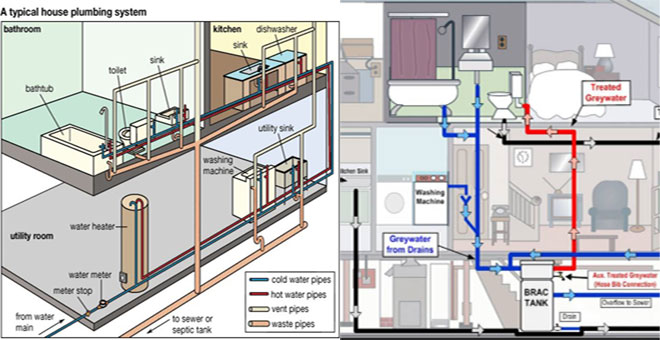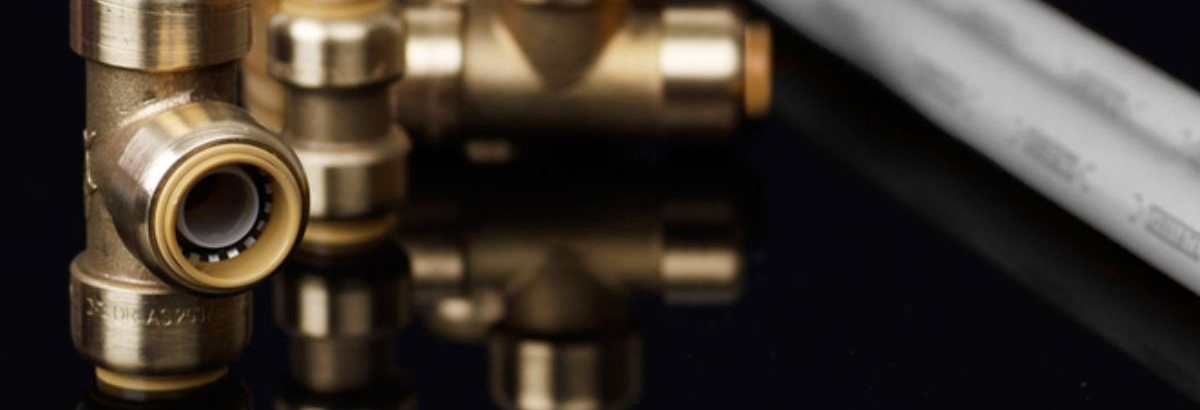Were you trying to find facts and techniques involving Plumbing Installation 101: All You Need to Know?

Comprehending just how your home's pipes system works is vital for every single home owner. From delivering tidy water for drinking, cooking, and bathing to securely eliminating wastewater, a properly maintained pipes system is essential for your family's health and comfort. In this detailed overview, we'll discover the detailed network that composes your home's pipes and offer tips on maintenance, upgrades, and dealing with typical concerns.
Intro
Your home's pipes system is more than just a network of pipes; it's a complex system that ensures you have access to clean water and efficient wastewater removal. Knowing its components and how they work together can help you prevent costly repairs and make certain every little thing runs efficiently.
Basic Components of a Plumbing System
Pipelines and Tubes
At the heart of your pipes system are the pipes and tubing that carry water throughout your home. These can be constructed from numerous products such as copper, PVC, or PEX, each with its advantages in terms of resilience and cost-effectiveness.
Fixtures: Sinks, Toilets, Showers, etc.
Components like sinks, bathrooms, showers, and tubs are where water is utilized in your house. Comprehending exactly how these fixtures connect to the pipes system aids in identifying issues and planning upgrades.
Valves and Shut-off Factors
Shutoffs manage the flow of water in your pipes system. Shut-off valves are crucial throughout emergency situations or when you require to make fixings, enabling you to isolate parts of the system without disrupting water circulation to the whole house.
Water Supply System
Key Water Line
The primary water line links your home to the municipal water or a personal well. It's where water enters your home and is distributed to different components.
Water Meter and Pressure Regulatory Authority
The water meter steps your water usage, while a pressure regulatory authority makes sure that water flows at a safe stress throughout your home's plumbing system, preventing damages to pipes and components.
Cold Water vs. Hot Water Lines
Understanding the distinction in between cold water lines, which provide water straight from the main, and warm water lines, which lug heated water from the water heater, assists in troubleshooting and preparing for upgrades.
Water drainage System
Drain Pipes and Traps
Drain pipelines bring wastewater away from sinks, showers, and commodes to the drain or septic system. Catches stop sewer gases from entering your home and also catch particles that can trigger clogs.
Air flow Pipes
Ventilation pipelines enable air into the water drainage system, avoiding suction that could reduce drain and trigger catches to empty. Appropriate air flow is important for keeping the integrity of your plumbing system.
Relevance of Proper Drain
Ensuring appropriate water drainage prevents back-ups and water damages. Frequently cleansing drains pipes and maintaining catches can protect against costly repair work and extend the life of your pipes system.
Water Furnace
Types of Hot Water Heater
Hot water heater can be tankless or typical tank-style. Tankless heating systems heat water as needed, while containers store heated water for instant use.
Updating Your Plumbing System
Reasons for Updating
Updating to water-efficient components or changing old pipelines can boost water quality, decrease water bills, and boost the worth of your home.
Modern Pipes Technologies and Their Benefits
Explore innovations like clever leakage detectors, water-saving toilets, and energy-efficient hot water heater that can conserve money and reduce environmental impact.
Cost Considerations and ROI
Determine the ahead of time prices versus long-lasting financial savings when taking into consideration pipes upgrades. Several upgrades pay for themselves through decreased utility costs and fewer repairs.
How Water Heaters Link to the Plumbing System
Understanding how water heaters connect to both the cold water supply and hot water distribution lines helps in identifying problems like inadequate hot water or leaks.
Maintenance Tips for Water Heaters
Frequently purging your hot water heater to remove sediment, examining the temperature level settings, and evaluating for leakages can prolong its lifespan and improve energy efficiency.
Common Plumbing Concerns
Leakages and Their Reasons
Leakages can happen because of maturing pipelines, loosened installations, or high water pressure. Resolving leaks immediately stops water damage and mold growth.
Clogs and Clogs
Obstructions in drains pipes and bathrooms are typically triggered by flushing non-flushable items or an accumulation of grease and hair. Utilizing drain displays and bearing in mind what drops your drains pipes can stop blockages.
Signs of Plumbing Troubles to Expect
Low water pressure, slow-moving drains pipes, foul odors, or abnormally high water costs are indications of possible pipes issues that should be resolved immediately.
Pipes Maintenance Tips
Regular Examinations and Checks
Arrange yearly pipes evaluations to catch concerns early. Search for signs of leakages, rust, or mineral buildup in faucets and showerheads.
Do It Yourself Maintenance Tasks
Basic tasks like cleaning faucet aerators, looking for bathroom leakages using color tablet computers, or protecting revealed pipes in cool climates can stop significant plumbing issues.
When to Call a Professional Plumber
Know when a plumbing concern needs specialist knowledge. Attempting complicated repairs without appropriate expertise can result in even more damages and higher repair service expenses.
Tips for Lowering Water Use
Straightforward behaviors like fixing leakages promptly, taking shorter showers, and running complete loads of laundry and meals can preserve water and reduced your utility expenses.
Eco-Friendly Pipes Options
Take into consideration sustainable plumbing products like bamboo for floor covering, which is durable and eco-friendly, or recycled glass for counter tops.
Emergency Preparedness
Actions to Take During a Plumbing Emergency situation
Know where your shut-off shutoffs lie and how to turn off the water system in case of a burst pipe or significant leakage.
Relevance of Having Emergency Contacts Useful
Keep get in touch with info for regional plumbing professionals or emergency situation solutions conveniently offered for fast response during a plumbing crisis.
Ecological Impact and Conservation
Water-Saving Components and Devices
Installing low-flow faucets, showerheads, and bathrooms can dramatically minimize water use without compromising performance.
DIY Emergency Fixes (When Applicable).
Short-lived repairs like utilizing duct tape to spot a dripping pipe or placing a bucket under a trickling tap can reduce damage till a specialist plumber shows up.
Conclusion.
Recognizing the makeup of your home's pipes system equips you to preserve it efficiently, saving time and money on repair services. By following normal upkeep routines and staying informed about modern-day pipes innovations, you can ensure your plumbing system operates efficiently for several years ahead.
HOW YOUR PLUMBING SYSTEM WORKS
Which Pipes Do What?
Blue lines = fresh water supply entering the building Red lines = hot water supply entering the building Grey lines = pipes carrying waste away from the building and venting pipes carrying gases away from the building (through the roof) YOUR MAIN PLUMBING SYSTEMS
There are two main plumbing systems that support your home s basic plumbing needs one that brings clean water into your home, and one that sends dirty water away from your home. Connected to the toilet, bath, shower, and other faucets in your home, these two systems keep your water flowing in the right directions.
ACCESSING FRESH WATER
Fresh and clean water is brought into your home through the main water supply line . Filtered through one pipe, this water is pressured to flow into the various fixtures in your home at any given time.
This water can be sourced from a well located on your property, a pond or river (mostly cottages), or, as in most cases, from the city s municipal water treatment centre. However, it is important to note that water that is untreated, such as the water siphoned from ponds or rivers, may not be safe to drink. Personal water supplies always need to be treated for hardness and contaminants before consumed.
MUNICIPAL WATER SUPPLIES
Improve taste and odour Remove sediment Eliminate hardness Reduce chlorine COLD WATER SUPPLY VS. HOT WATER SUPPLY
Cold water flows into your home or building through the service line, which then distributes hot or cold water to your fixtures. This line is most commonly run through a central column that runs floor to floor. Hot water runs in short and straight pipes as the longer the pipeline, the more heat that will be lost in the transfer. Having shorter pipes also allows residents to access hot water more quickly.
WASTE WATER SYSTEM
Your wastewater system is divided into two parts pipes that send wastewater away from your home and venting pipes that send sewer gas away from your home. Sewage water travels through pipes that flush the water and waste towards local sewers that are operated and managed by your city or town. Most sewer systems rely on gravity to move the wastewater to where it needs to go.
The further away from your toilet or sink, the larger wastewater pipes become. This allows for waste to be disposed of from various parts of your home or business at once without pipe blockages. The angle and flow of these pipes are also essential for keeping your waste pipes clear of build up.
https://harrisplumbing.ca/how-your-home-plumbing-system-works/

I hope you liked our post about Exploring Your Homes Plumbing Anatomy. Thanks so much for finding the time to read our content. Sharing is nice. One never knows, you may very well be helping someone out. Thank you so much for your time spent reading it.
Book Your Appointment